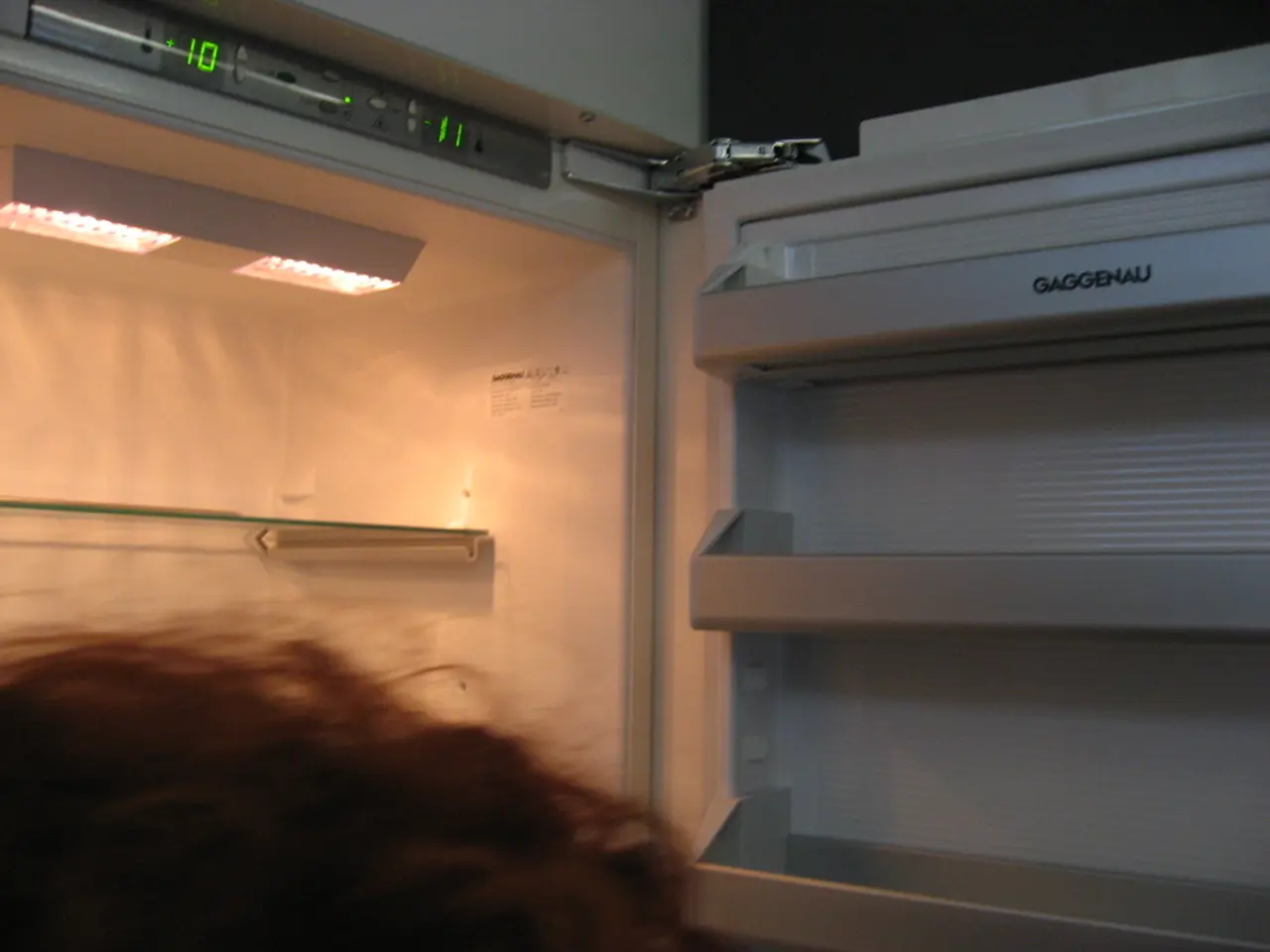Thawing coolers is hassle-free.
In the quest to keep your freezer running smoothly, regular maintenance is key. Here's an easy, efficient method for defrosting your freezer using a hair dryer and hot water, a popular household trick that's been making waves on social media.
**Step 1: Safety First** Turn off and unplug your freezer to ensure safety and reduce energy use during defrosting. Remove all food, placing it in an insulated cooler with ice packs if needed to keep items cold. Take out drawers and shelves to prevent damage and make cleaning easier later on.
**Step 2: Speed up the Defrosting Process** To speed up ice melting, place bowls or containers of hot water inside the freezer. This will raise the temperature and loosen the ice. You can also gently wipe ice with a warm, damp cloth to assist melting.
**Step 3: Use a Hair Dryer Carefully** Set the hair dryer on a low or medium heat setting. Hold it at a safe distance from any water to avoid electric hazards. Move the dryer steadily along the ice to warm and melt it without damaging freezer surfaces.
**Step 4: Collect Melting Water Promptly** Use towels to soak up water or channel it to a drain if your freezer has one to prevent spills and messes.
**Step 5: Clean and Dry the Freezer** After defrosting, wipe the interior with a mix of warm water and mild detergent or baking soda to remove residue and odors. Make sure everything is dry before plugging the freezer back in.
**Safety and Damage Prevention Tips** - Avoid using sharp knives or tools to chip ice, as this can puncture the interior and release hazardous refrigerants. - Never mix water and electricity unsafely (keep the hair dryer away from wet areas) to prevent electric shock. - Do not use corrosive substances like salt or chemical de-icers inside the freezer, as they can damage seals or surfaces and contaminate food. - Defrost regularly to prevent thick ice buildup, which makes defrosting faster and reduces energy consumption over time. - Keep freezer door seals clean and intact to minimize ice formation. - Minimize the door opening time to reduce moisture entering the freezer, which forms ice.
By following this approach, you can safely defrost your freezer quickly using hot water and a hair dryer, while also maintaining the appliance and preventing future ice buildup effectively. Regular cleaning and proper food packaging also contribute to preventing ice buildup in the freezer.
Neglecting to defrost a freezer can lead to higher energy consumption, loss of space, and potential damage. This method can save energy and space in the freezer, making it a practical solution for busy households. Signs that defrosting is needed include a visible ice layer and loss of appliance efficiency.
For stubborn spots, a plastic spatula can be helpful during the defrosting process. After defrosting, it's recommended to thoroughly clean the freezer and wash all loose parts. Treating the inner surfaces with a thin layer of cooking oil or glycerin can prevent re-freezing.
In conclusion, with this easy and efficient method, you can keep your freezer running smoothly and prevent ice buildup effectively. Regular maintenance is key to ensuring your appliance's longevity and efficiency.
The home-improvement trick, growing popular on social media, involves defrosting the freezer, and it can be incorporated into a modern home-and-garden lifestyle for efficient maintenance. To effectively use this method, follow a schedule for regular defrosting to save energy and space in your home-and-garden setup.




